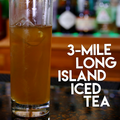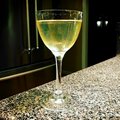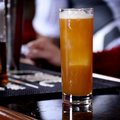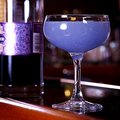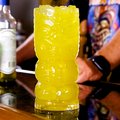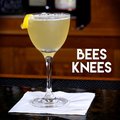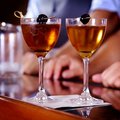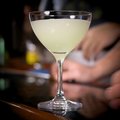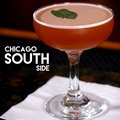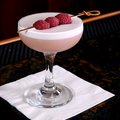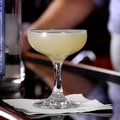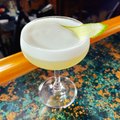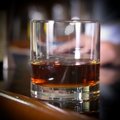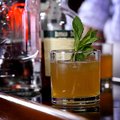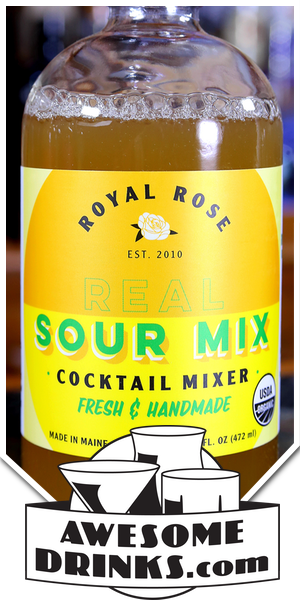Returned 52 result(s) for "gin"; page 1 of 4.
Notes:
Drawing potency of spirits combined, with a bit more mild sweetness.
Contains:
Filed In:
The concept of the 50/50 was to go into the opposite direction of a "dry martini", which is to use less dry vermouth. So, to make your martini less dry you had more dry vermouth to counter your dry gin. Yet, this still isn't sweet.
Notes:
Vermouth forward blast of flavor, very spirit forward and "boozy."
Contains:
Filed In:
No doubt popularized in the 80's, the Alabama Slammer is a product of the 70's and probably defined as a shot to be "slammed", but it's a great cocktail in a tall glass!
Notes:
Tropical sweetness of brown sugar and citrus balanced like an "alcoholic tang." Amaretto and orange juice combination is always a great killer flavor profile.
Contains:
Filed In:
The Aviation was created by Hugo Ensslin, head bartender at the Hotel Wallick in New York, in the early twentieth century. The first published recipe for the drink appeared in Ensslin's 1916 Recipes for Mixed Drinks.
Notes:
Approachable classic cocktail with complicated herbal notes, violet/flowery mid-palate which plays well against the juniper notes. In some ways, "tastes like purple."
Filed In:
Notes:
Funky rum flavor, classic juicy tiki with mild tart and sour finish
Contains:
Filed In:
The “Bees Knees” is prohibition-era slang for “the best” and this cocktail does bring out the best of honey and gin. The exact origin of this recipe is lost to history but as Jeffrey Morganthaler said, it appears in Trader Vic’s Bartenders Guide circa 1947 and called for the use of honey.
Notes:
Lemon Centric flavor profile, muted honey sweetness with gin botanicals.
Contains:
Filed In:
Notes:
A bright chartreuse and and gin vibrancy with a good deal of potency. A balance of botanicals and herbs.
Contains:
Filed In:
Notes:
Herbal with muted anise flavor, lightly dry vermouth finish
Contains:
Not to be confused with the single-word form of the “Southside”, the Chicago South Side is a similar variation that brings Angostura into the mix. Unlike the Southside, however, this cocktail calls for lime juice over lemon juice and London Dry Gin over American Gin.
Notes:
Lovely aromatic flavor of trade spices, gin botanicals and acidity. Just a great drink.
This cocktail is also documented in the 1931 publication Old Waldorf Bar Days by Albert Stevens Crockett (page 127). In this publication, the cocktail was designed as a rum-based recipe with a bit of grenadine.
Notes:
Raspberry sweetness mingled with floral juniper with a light dry citrus mid-palate that finishes sweet and silky with raspberries and gin.
Filed In:
The corpse reviver #2 is the second version of the corpse reviver and often considered the best version. Designed as a cure-all for a hangover. This rendition was born around 1871.
Notes:
An herbal sour bite that will wake you up with a bit of aromatic gin/juniper aroma with a bit of a fennel mid-palate flavor.
Filed In:
Notes:
Green celery cucumber notes, floral aroma with a off-dry finish.
A simple take on a negroni, there are many different variations of negroni this one emphasizes cynar
Notes:
Plum, Fig, with a light sweetness and bitter finish
Contains:
In 1959 he came up with a couple hangover remedies which he called Dying Bastard and Dead Bastard while working at the Marco Polo Club in Manhattan.
Notes:
Light/muted combination of bourbon and spicy ginger that remains light and refreshing. Not as bourbon-flavored as the dying bastard recipe.
Contains:
Filed In:
The idea of the decepticon is to deceive the drinkers eyes into thinking they're going to be sipping on a lemon drop...but they are not: this is a smoky mezcal number instead.
Notes:
A smokey citrus with undertone of maraschino liqueur
Contains:
Filed In:
